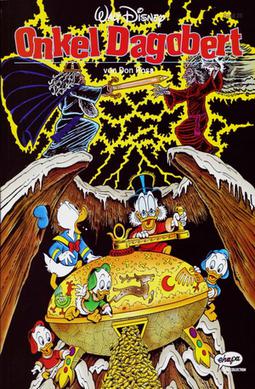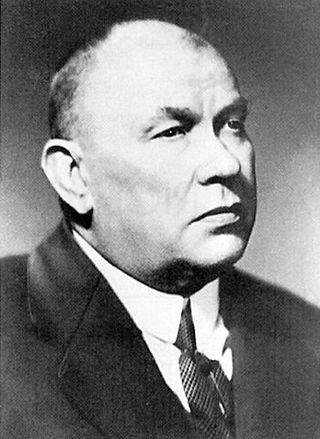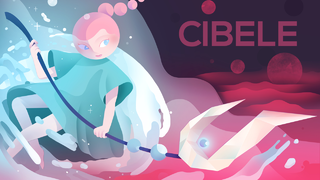Iku-Turso could refer to:
- Iku-Turso (creature), a Finnish mythological creature
- Iku-Turso (submarine), a Finnish submarine used during the Second World War
- 2828 Iku-Turso, an asteroid
Iku-Turso could refer to:
Finnish mythology is a commonly applied description of the folklore of Finnish paganism, of which a modern revival is practiced by a small percentage of the Finnish people. It has many features shared with Estonian and other Finnic mythologies, but also shares some similarities with neighbouring Baltic, Slavic and, to a lesser extent, Norse mythologies.

Sea monsters are beings from folklore believed to dwell in the sea and often imagined to be of immense size. Marine monsters can take many forms, including sea dragons, sea serpents, or tentacled beasts. They can be slimy and scaly and are often pictured threatening ships or spouting jets of water. The definition of a "monster" is subjective; further, some sea monsters may have been based on scientifically accepted creatures, such as whales and types of giant and colossal squid.

The Finnish Navy is one of the branches of the Finnish Defence Forces. The navy employs 2,300 people and about 4,300 conscripts are trained each year. Finnish Navy vessels are given the ship prefix "FNS", short for "Finnish Navy ship", but this is not used in Finnish language contexts. The Finnish Navy also includes coastal forces and coastal artillery.
Vesikko is a submarine, which was launched on 10 May 1933 at the Crichton-Vulcan dock in Turku. Until 1936 it was named by its manufacturing codename CV 707. Vesikko was ordered by a Dutch engineering company Ingenieurskantoor voor Scheepsbouw in 1930 as a commercial submarine prototype, being the prototype for the German Type II submarines. Purchased by the Finnish before World War II, she saw service in the Winter War and Continuation War, sinking the Soviet merchant ship Vyborg as her only victory. After the cease-fire with the Allies in 1944, Vesikko was retired. Finland was banned from operating submarines after the war and she was kept in storage until she was turned into a museum ship.

"The Quest for Kalevala" is a 1999 Uncle Scrooge comic book story written and drawn by Don Rosa. The story was first published in the Danish Anders And & Co. #1999-48; the first American publication was in Uncle Scrooge #334, in October 2004.

The Baltic Sea Campaigns were conducted by Axis and Allied naval forces in the Baltic Sea, its coastal regions, and the Gulf of Finland on the Eastern Front of World War II. After early fighting between Polish and German forces, the main combatants were the Kriegsmarine and the Soviet Navy, with Finland supporting the Germans until 1944 and the Soviets thereafter. The Swedish Navy and merchant fleet played important roles, and the British Royal Navy planned Operation Catherine for control of the Baltic Sea and its exit choke point into the North Sea.
Iku-Turso is a malevolent sea monster in Finnish mythology, best known for appearing in the Kalevala. Nowadays Meritursas means octopus in Finnish, named after Iku-Turso, but originally tursas is an old name for walrus while the more common term is mursu. However, it is more common to see the word mustekala, the name of its Subclass Coleoidea in Finnish, for the octopus.
In Finnish mythology, the Nine diseases are the sons of Loviatar, the blind daughter of Tuoni. She is impregnated by wind. According to the version told in the Kalevala they are Pistos (consumption), Ähky (colic), Luuvalo (gout), Riisi (rickets), Paise (ulcer), Rupi (scab), Syöjä (cancer), and Rutto (plague). The ninth, a witch and the worst of all, remains unnamed. He, the personification of envy, is banished by his mother to become the scourge of mankind. Other rune versions mention nine diseases by name the witch being the tenth son. Some of them also use more esoteric names such as Nuolennoutaja, Painaja, Kielen kantaja, Ohimoiden ottaja, and Sydämen syöjä, which can as well be interpreted as names of diseases. Louhi, the Mistress of North who acts as a midwife to the sons, sends them to Kaleva where they are defeated by Väinämöinen.

Iku-Turso was a 500-tonne Vetehinen-class submarine that served in the Finnish Navy during the Second World War. It was launched in May 1931 and was named after a mythological Finnish sea monster, Iku-Turso. It was built by the Crichton-Vulcan shipyard in Turku according to a project developed by NV Ingenieurskantoor voor Scheepsbouw, "IvS", and was scrapped in 1953.
Iku or IKU may refer to:

Crichton-Vulcan is an abandoned shipyard in Turku, Finland, that once formed the cornerstone of the Finnish shipbuilding industry. The shipyard is best known for the World War II coastal defence ships and submarines it produced.

The Vetehinen-class submarine was a Finnish 500-tonne submarine class of three vessels that was designed and built in the 1920s and early 1930s. The Vetehinen class served in the Finnish Navy during World War II. The class was designed by Dutch dummy company Ingenieurskantoor voor Scheepsbouw den Haag (I.v.S) and built by the Finnish Crichton-Vulcan shipyard in Turku. The class was based on the German World War I Type UB III and Type UC III submarines and served as prototype for Type VII submarines.
War reparations of Finland to the Soviet Union were originally worth US$300,000,000 at 1938 prices. Finland agreed to pay the reparations in the Moscow Armistice signed on 19 September 1944. The protocol to determine more precisely the war reparations to the Soviet Union was signed in December 1944, by the prime minister Juho Kusti Paasikivi and the chairman of the Allied Control Commission for controlling the Moscow Armistice in Helsinki, Andrei Zhdanov.

Allan Walfrid Staffans was a Finnish technician, vuorineuvos and shipbuilder.

Cibele is a 2015 adventure video game about a romance developed through an online multiplayer game.

Sisu was a Finnish state-owned icebreaker. Built in 1939 at Wärtsilä Hietalahti Shipyard in Helsinki, she was one of the world's first diesel-electric icebreakers. In addition to icebreaking duties, she served as a submarine tender for the Finnish Navy during the summer months until the end of the Continuation War.

The Soviet Navy launched the Soviet submarine Baltic Sea campaign in 1942 to harass the strategic iron-ore traffic from neutral Sweden to Nazi Germany during World War II. The Soviet Union and the German Reich fought each other on the Eastern Front (1941-1945) during the war. The Allies also launched other operations - especially involving the Royal Navy - against the traffic.

Noita is a platform roguelite game developed by Nolla Games. Players control a sorcerer that can create and cast spells in order to defeat enemies named after Finnish mythological creatures. The game takes place in a 2D world with procedurally generated areas where every pixel is physically simulated. It was released in early access for Microsoft Windows on 24 September 2019. Noita left early access as the 1.0 version was released on 15 October 2020.